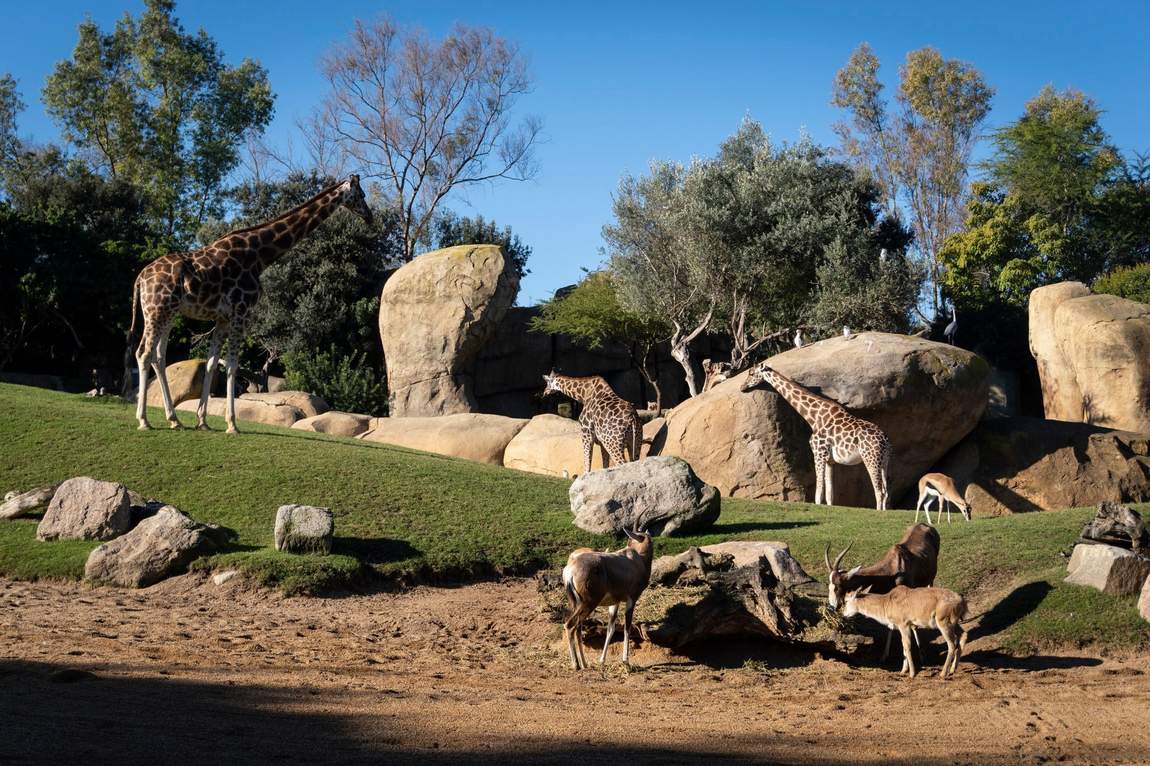If you have a chance to visit Valencia with a child, be sure to include in your excursion program a visit to the biopark, a wonderful garden where both people and animals feel free and safe. Bioparks, which are several in Spain, are unique and innovative because the park guests have the impression of maximum immersion in the wild. On 100,000 m², animals' natural habitat has been recreated in detail, and cages and enclosures have been replaced with natural barriers: ditches with water, stone mounds, and elevations.

Wildlife in the city is a fantastic phenomenon. It is unlikely that you, going on an excursion to Valencia, assumed that you could get into the African savannah, where lions, giraffes and antelopes walk. There are no enclosures here, but the animals are reliably separated from visitors by natural barriers. Such barriers are part of the landscape. For example, you will find yourself at the river, on the other side of which white rhinos graze or marabou storks pace. Animals and birds feel at home, which is why it is so interesting to observe their behaviour.

The savannah is only part of the exhibit. Take a stroll through the equatorial forests in the Biopark, which aren't teeming with venomous creatures but do feature an elephant family, a flock of small, mischievous monkeys, a respectable orangutan and a woolly jaguar. And who lives in tropical rivers and lakes? Accidental encounters can be dangerous, but the Valencia Zoo has created a risk-free environment for watching crocodiles and hippos dive.
The most appealing part of the Biopark for children might be the Madagascar area. There are many exotic animals, such as viverrids and tenrecs, but the lemurs win by a wide margin in the battle for visitors' attention. They are charming, trusting, curious and highly friendly — they go out of their way to get acquainted and offer their backs for stroking.

What other wonders of nature can be seen at Valencia Bioparc? One of the curiosities is a giant termite mound. It does not resemble an anthill mound but resembles a small rock. Near it, an anteater often grazes, eating termites, and abandoned termite mounds are used for housing by mongooses, warthogs or birds. You will also be able to observe burrowing animals. "Underground savannah" is a whole system of holes built by foxes, hyenas, porcupines and other animals for housing.
You can also look into the "Amphibian World": it is there where some poisonous frogs live, which are not allowed to roam around the "Equatorial Forest" exposition.
Of course, plants also create a natural habitat for animals. The most prominent representative of the flora on the territory of the Biopark is the baobab, a tree that grows to a gigantic size in arid Africa. The zoo also hosts a show of birds of prey (this is one of the most popular entertainment in Spain). The birds will show how they can look out for a target from a great height and dive at it with lightning speed.
Walking through the Bioparc may take a whole day, but you can refresh yourself in restaurants and cafes on the territory of Valencia Bioparc. For visitors with kids, a convenient infrastructure has been created, including places for changing clothes for a child, heating food and feeding. Restaurants and cafes have a children's menu. While parents are busy with peanuts, older children can play on the playground or watch a theatrical performance in the company of elephants.
If visiting the Bioparc gave you absolute pleasure (and we are sure it will), we recommend visiting another object — the Oceanographic Park, which is part of the City of Arts and Sciences of Valencia. In the largest aquarium in Europe, you can see the beauty of the underwater world without diving into the not always friendly sea.











